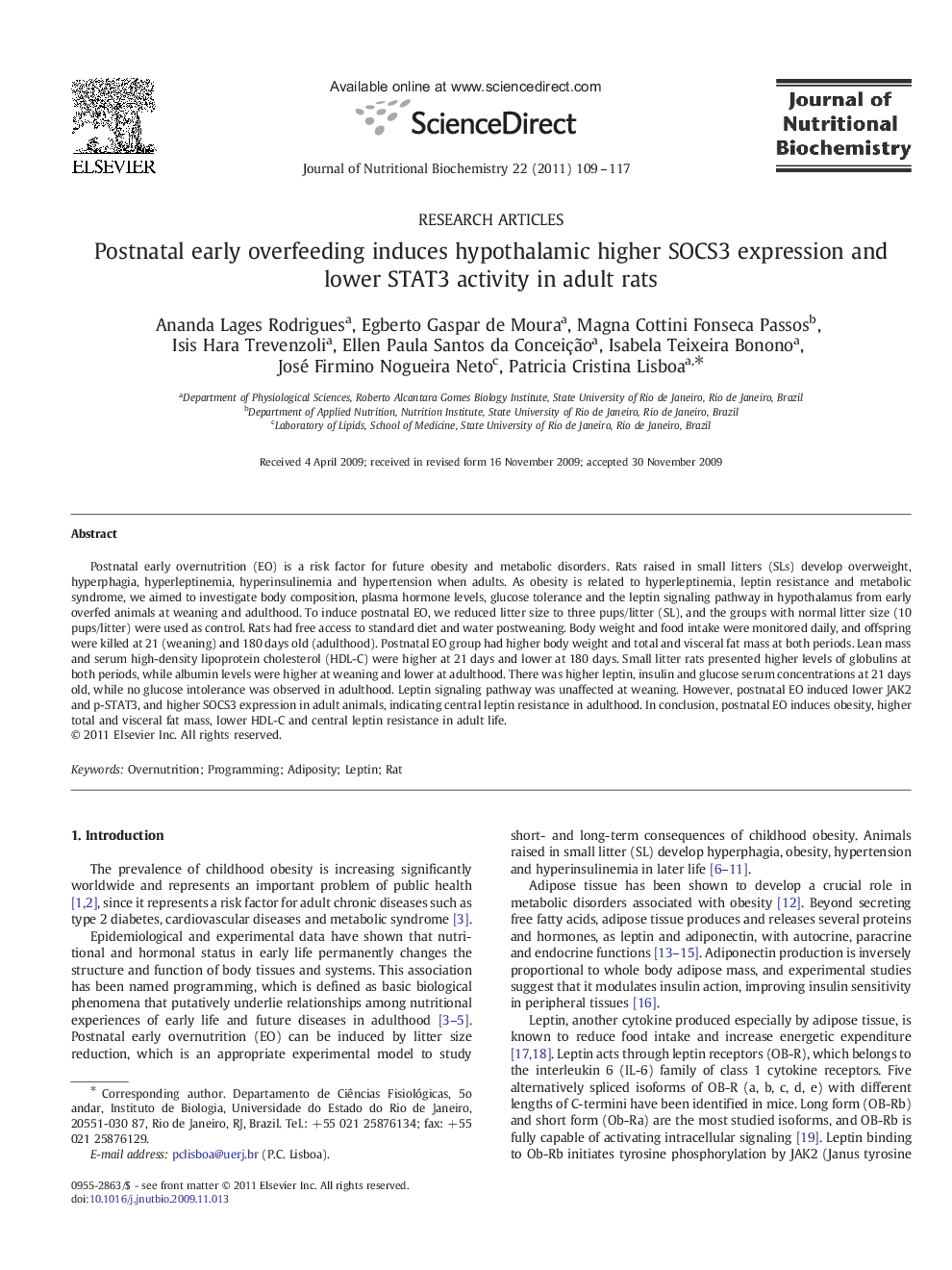| Article ID | Journal | Published Year | Pages | File Type |
|---|---|---|---|---|
| 1990694 | The Journal of Nutritional Biochemistry | 2011 | 9 Pages |
Postnatal early overnutrition (EO) is a risk factor for future obesity and metabolic disorders. Rats raised in small litters (SLs) develop overweight, hyperphagia, hyperleptinemia, hyperinsulinemia and hypertension when adults. As obesity is related to hyperleptinemia, leptin resistance and metabolic syndrome, we aimed to investigate body composition, plasma hormone levels, glucose tolerance and the leptin signaling pathway in hypothalamus from early overfed animals at weaning and adulthood. To induce postnatal EO, we reduced litter size to three pups/litter (SL), and the groups with normal litter size (10 pups/litter) were used as control. Rats had free access to standard diet and water postweaning. Body weight and food intake were monitored daily, and offspring were killed at 21 (weaning) and 180 days old (adulthood). Postnatal EO group had higher body weight and total and visceral fat mass at both periods. Lean mass and serum high-density lipoprotein cholesterol (HDL-C) were higher at 21 days and lower at 180 days. Small litter rats presented higher levels of globulins at both periods, while albumin levels were higher at weaning and lower at adulthood. There was higher leptin, insulin and glucose serum concentrations at 21 days old, while no glucose intolerance was observed in adulthood. Leptin signaling pathway was unaffected at weaning. However, postnatal EO induced lower JAK2 and p-STAT3, and higher SOCS3 expression in adult animals, indicating central leptin resistance in adulthood. In conclusion, postnatal EO induces obesity, higher total and visceral fat mass, lower HDL-C and central leptin resistance in adult life.
